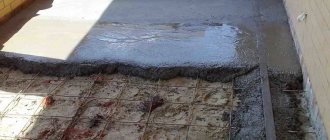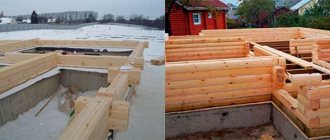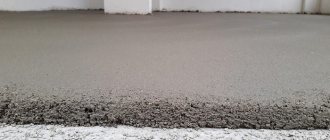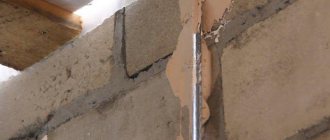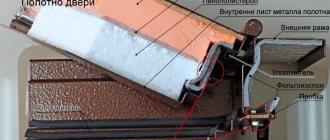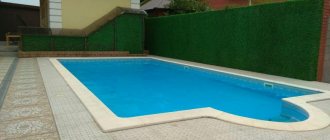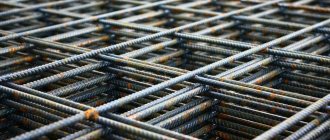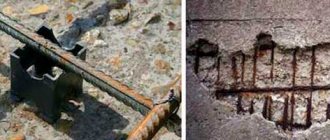Reinforcement material
Until recently, rebar and steel rod were synonymous. Now, not only different types of steel are used to make reinforcement.
Foundation reinforcement can be of the following types:
- steel - classics of the genre. Steel is an alloy of iron and carbon, and its properties depend on the proportions of these components, as well as the presence of additives. The quality of steel is influenced by the method of its production. In addition, the rods can be smooth or textured, which also affects the performance of the reinforcement. Steel is distinguished by its high strength and reliability, it does not deform even under significant loads, and working with it is relatively simple - such reinforcement can be bent right on the construction site. The only downside worth noting is the susceptibility to corrosion;
- Composite reinforcement is made on the basis of plastics. It is more expensive than metal, but is not afraid of corrosion, does not conduct electricity, weighs less and can withstand significant tensile loads (sometimes more significant than its steel counterpart). It can be smooth or grooved. It is rarely used in private construction due to its high price. Composite reinforcement can be of the following types: basalt-plastic reinforcement is made on the basis of basalt, a durable rock. The basalt is melted and stretched into threads that intertwine with plastic threads. It is justified to use such reinforcement in the construction of walls, since it conducts radio waves well without creating interference. Ideal for buildings where it is necessary to set up wireless Internet;
- Fiberglass reinforcement is ideal for the construction of foundations because it is not afraid of corrosion and does not conduct heat, which means it will not become a place for the formation of cold bridges that lead to the destruction of structures. Fiberglass, like basalt plastic, transmits radio waves well. Its main advantage is its high tensile strength, 1.5 times greater than that of steel;
- Carbon fiber reinforcement is made on the basis of graphite or diamond, hence the high strength, but also the high price. Higher impact and fracture strength than steel, allowing fewer rods to be used to achieve the same level of strength;
- glass reinforced polyethylene terephthalate produced by interlacing lavsan and glass fibers. The glass is pre-heated and stretched, making it durable. Lavsan gives the material flexibility, which is why it is good to use such reinforcement in moving soils.
Plastic reinforcement is still used quite rarely - in most cases there is no need for it, so further we will talk exclusively about steel reinforcement.
Fittings in CityMetal
Residents of Moscow and the region can order fittings from CityMetal, the leading online store in the region. The company cooperates with the largest domestic manufacturers and offers steel and fiberglass reinforcement of different diameters and lengths. Cutting is free of charge. You can even buy 1 linear meter of fittings, and the order can be delivered on the same day. The store offers some of the lowest prices in the region and constantly runs promotions.
Types of reinforcement for foundations
On the Internet you can often come across the question of which reinforcement is best suited for the foundation. It is fundamentally wrong, since the reinforcement for the foundation is selected solely according to its characteristics. For these purposes, rolled products of classes A-I (A240), A-II (A300) and A-III (A400) are used. In 99 cases out of 100, these types of foundation reinforcement cover all the needs for its construction.
The use of other brands of reinforcement for the foundation is not prohibited, but is not economically feasible. Why pay extra money for clearly excessive rental characteristics? To minimize the cost of its purchase, it is necessary to follow the rules for the reinforcement of concrete structures established by SNiP 52-01-2003, SP 52-101-2003 and other regulatory documents.
Types of steel reinforcement by type of production
The properties of steel reinforcement directly depend on the method of its production:
- Hot rolled steel (marked with the letter A) is processed at very high temperatures, which lead to some changes in the structure of the alloy. The result is a very durable material that is suitable for use even in critical facilities. This steel is excellent at welding, which is why it is used in cases where individual rods need to be connected by welding (however, this method is only suitable for stable soil);
- Cold-rolled steel (marked with the letter B) is produced by exposing the rolled steel to rolls, which roll the workpiece to the required diameter, then the rollers give it relief. The finished reinforcement is wound into skeins, which can be unwound, cut and used for their intended purpose at the construction site. The diameters of the fittings are 3-8 mm. Cold-rolled steel is also used in the construction of foundations, but its use is not always possible - it is worth making preliminary calculations;
- wire rope steel (K) is too strong for building a foundation, it is not economically profitable to use it, but when it comes to the construction of structures that will work under extreme conditions, long-span buildings, etc., then its use is justified.
Reinforcement surface type
Steel reinforcement can have a smooth or corrugated surface:
- Smooth reinforcement is cheaper to produce, but is completely unsuitable for building a foundation. Its scope of use is limited to the construction of walls or arranging floor screeds. It can also be used as an auxiliary when assembling the reinforcement frame (for connecting ribbed rods), which will save money, but not lose on the strength of the foundation;
- ribbed reinforcement has a larger surface area, and therefore has better contact with concrete. Stronger adhesion ensures high foundation reliability, strength and resistance to loads. Depending on the type of profile, ribbed reinforcement can be: with a ring profile, it is not very suitable for constructing a foundation. Such reinforcement provides good adhesion, but loses strength under repeated loading;
- reinforcement with a crescent profile does not adhere so well to concrete, but it allows you to build stronger and more reliable foundations. This is the preferred option;
- the combined profile is designed specifically for A500SP class reinforcement and is suitable for foundation construction.
Main types of reinforcing bars
As an aside, we can say that in earlier times, reinforcement involved the use of only metal rods, but thanks to the development of technology, the choice has expanded. Therefore, at the moment, two types of reinforcement are used to strengthen foundations: metal and fiberglass.
How is plastic foundation reinforcement superior to standard metal? What is their difference and to what extent is one type superior to the other?
As for the metal type. Based on its name, it represents a set of steel rods of various diameters and surface types. Most often, rods with a round cross-section are used in the work. And in order to increase the strength of the product (foundation), rods are selected with a ribbed helical surface.
Fiberglass type of reinforcement. This variety represents composite rods. The production of such products began back in the 70s of the last century.
Read here! Technology of tying reinforcement for foundations - simple and correct methods of tying and installing reinforcement for various types of foundations
But, despite their relative age, builders began to use them when constructing foundations quite recently. Fiberglass is used to make fittings.
Reinforcement class and steel grade
The strength of the material can be judged by the class of reinforcement. Along with the new marking, the old one is still used, so we will mention both:
- A240 (according to the old GOST - AI) is hot-rolled steel with a smooth surface, diameter - 6-40 mm. Reinforcement with a diameter of up to 12 mm can be supplied in coils and rods, more than 12 mm - only in rods. It is not suitable for foundation construction as working reinforcement, but can be used for clamps;
- A300 (AII) - reinforcement with a ring-shaped profile; it is not recommended for use in the construction of foundations, but in private construction it is still used for small buildings and non-critical objects. Naturally, it can be used as structural reinforcement;
- A400 (AIII) and A500 are ideal for foundations. The rods have a relief, the diameter ranges from 6 to 40 mm, length - from 5 to 11.7 m;
- A600 (AIV) – high-strength reinforcement, used in the construction of critical facilities, suitable for structures with prestressing;
- A800 (AV) and A1000 (AVI) reinforcement is used in the construction of multi-story buildings, bridges and other structures where special strength is extremely important.
In addition, other types of steel reinforcement are used in the construction of the foundation, the properties of which can be judged by the markings:
- the letter C indicates the ability to fasten the rods into a frame by welding (examples - A400C, A500C, A600C). A500C class fittings have recently become especially popular;
- the letter K indicates resistance to corrosion (A400K, for example);
- At in the marking means that the steel has been strengthened thermomechanically. The intermittent cooling used in this technology increases strength and corrosion resistance. A popular class of such fittings is At800.
GOSTs and technical specifications require the use of a specific grade of steel for the production of a certain type of reinforcement. The manufacturer must indicate what kind of steel he used - this is very important information for the developer, allowing him to correctly perform all the necessary calculations.
Some of the steel grades used are shown in the table below. The characteristics of each brand are the topic of a separate article. Here we only note that, for example, 35GS steel is low-alloy, and 25G2S steel is made using silicon and manganese as alloying additives. Both of these alloys are highly durable.
Concrete reinforcement: types and classification
Reinforcement used in modern construction is classified according to the following factors:
- Material of manufacture: carbon steel or fiberglass.
- Production technology and physical state: rod, rope and wire.
- Section profile type: round, smooth or grooved.
- Work of reinforcement in concrete: prestressed or non-prestressed.
- Purpose: working, distribution and installation.
- Installation method: welded or tied with mild steel, copper or aluminum wire.
| Diameter of fittings, mm | Profile | Purpose |
| 6 | smooth | assembly/for forming clamps |
| 8 | installation / possible use as reinforcing elements of bored piles | |
| 10 | periodic (grooved, ribbed) | working/used for small buildings taking into account soil parameters |
| 12 | working/the most common options for the construction of a strip or slab reinforced concrete base | |
| 14 | ||
| 16 | working/used for large houses on difficult soil |
Also, concrete reinforcement with reinforcement can be transverse or longitudinal in nature:
- Transverse reinforcement eliminates the formation of inclined cracks from shearing mechanical loads and connects the concrete of the compressed zone with the reinforcement in the “stretched” zone.
- Longitudinal reinforcement absorbs tensile loads and prevents the occurrence of vertical cracks in the loaded area.
What type, type, diameter and quantity of reinforcement to use in each specific case is indicated in the design documentation for a particular building or structure. However, many developers who build houses and structures without a design are interested in a common question: what is the consumption of reinforcement per 1 m3 of concrete necessary to ensure the durability of the structure. Let us consider the consumption of reinforcement per cube of concrete in more detail.
Types of fittings by location and purpose
A whole frame is assembled from reinforcement, in which steel rods are located in different directions. Working rods are those that bear the main load. To connect them together and correctly orient them in space, auxiliary rods, the so-called, are used. clamps _ The working fittings are located horizontally, in the longitudinal direction, and the clamps can be transverse (positioned horizontally) and vertical. Not all foundations require the use of all three types of reinforcement.
- The cross-section of the working reinforcement is selected based on calculations. The location of the rods depends on the type of foundation. For example, in a strip foundation, the working rods are arranged longitudinally in one or two rows. The number of rows of reinforcement depends on the thickness of the foundation: with a thickness of less than 150 mm, only one row can be used;
- transverse reinforcement is necessary to connect working reinforcement. When constructing a strip foundation, transverse rods are necessary, but when pouring concrete into a monolithic slab, they are dispensed with;
- vertical reinforcement used where working reinforcement is located in two or more layers.
According to their purpose, reinforcement is divided into working, structural and installation . Constructive – the one that takes on the maximum load. Structural reinforcement takes on the load from shrinkage, and installation reinforcement serves to combine structural and working reinforcement into a single frame. Anchor reinforcement is sometimes distinguished separately - these are embedded parts.
How to connect reinforcement in the foundation
In industrial construction, metal reinforcement bars are usually joined into a single frame by electric spot welding. This allows you to record the intersections of the rods at high speed. However, this method also has its limitations:
- Firstly, not all types of metal fittings can be connected by welding, but only those that are marked with the letter “C” - “welding”.
- In addition, welding metal rods of reinforcement is a rigid means of fixation, but the load-bearing frame must have a small degree of freedom at the intersection of the rods. Meanwhile, welding fixes the rods without play.
- Another disadvantage of welding reinforcement is the loss of the strength properties of the metal rod at the welding site.
Also a popular way of connecting metal rods of reinforcement at the points of its intersection in the frame is knitting. It is carried out using a knitting wire, from which loops are formed and twisted at each intersection of the metal rods of the frame.
A new way to secure the intersection of metal rods is to use plastic construction clamps. This is a very quick fixation method and also relatively cheap.
Knitting reinforcement – photo
When connecting frame rods in the corner parts of the foundation, they must be overlapped, with the rods bent, without simply crossing them. Read the article - how to tie reinforcement for the foundation.
Reinforcement size
The fittings are produced in a wide range of sizes:
- rods of classes A240, A300, A400, A600, A800, A1000 are produced with a diameter of 6-80 mm, and fittings of classes A500C and B500C are produced with a diameter of 4-40 mm;
- the length of the reinforcement in coils or rods (depending on the diameter) is 6-12 m;
- Among the additional parameters of the reinforcement, it is worth noting the corrugation pitch, which is 0.51-0.86 parts of the reinforcement diameter, and the height of the corrugation protrusions is 0.065-0.07 parts of the diameter.
Which reinforcement is better to choose for the foundation? It all depends on the type of foundation and the load on it - in each specific case you will need a complex and accurate calculation of the diameter of the rods. So that you can roughly understand what rods you will have to buy, we provide the following information:
- the diameter of the working reinforcement depends on the cross-sectional area of the foundation (S), the data is given in the table;
- for transverse clamps use reinforcement with a diameter of at least 6 mm;
- vertical clamps must have a diameter of at least 6 mm for foundation heights less than 80 cm and at least 8 mm for foundation heights greater than 80 cm.
Rules for reinforcing strip foundations
Reinforcing bars differ not only in class and appearance, they also differ in their purpose:
Working longitudinal (horizontal)
Rods that are located along the base and take the main load from compression and tension factors. To increase the strength of the foundation, they are installed in the lower and upper parts of the tape. The diameter of the lower reinforcement elements must be greater than the diameter of the upper rods.
Transverse mounting
It is installed to connect individual upper or lower working rods together. Ensures the integrity of working elements and distributes the load between them.
Scheme of typical strip foundation reinforcement
Vertical
It is installed vertically and connects the upper and lower longitudinal reinforcement. Proper reinforcement of a strip foundation uses all these types of rods. Only together will they ensure the integrity of the reinforcement structure and evenly distribute the load.
Reinforcement and foundation type
It is not difficult to guess that different foundations require different reinforcement, and it is also laid in different ways:
- strip foundation cheaper than slab, less susceptible to deformation, allows you to equip the basement, which is why this technology for creating a foundation is used most often. As a rule, reinforcement with a diameter of 10-12 mm is used for strip foundations, unless calculations require more. Regardless of the height of the tape, it is necessary to use two reinforcing belts (more than two in the case of moving soils). Vertical and transverse rods do not carry much load, so reinforcement with a smooth surface is suitable for them;
- slab foundation It is expensive, but it is the most reliable. Reinforcement with a diameter of at least 12-16 mm is used - the larger and heavier the building, the more complex the soil, the thicker the rods should be. If the slab thickness is more than 15 cm, the reinforcement is laid in two or more belts;
- pile foundation is an ideal solution for light buildings. The pillars are formed using ribbed reinforcement with a diameter of 10-12 mm, they are connected with clamps with a diameter of 4-6 mm. The number of working reinforcement rods depends on the size of the column: the minimum is 2 rods, more often they use 4, but sometimes more can be used - again, it all depends on the construction conditions.
How to calculate reinforcement for a foundation
Let us consider the question of how to calculate the reinforcement for a foundation using the example of a structure with a cross-section of 40x100 cm. Such a foundation is usually sufficient for the construction of an individual house under normal construction conditions. However, in this case, the principle of calculation itself is important to us. The simplest diagram of reinforcement in a strip foundation can look like this:
The left side of the figure shows a reinforcement diagram when the width of the foundation does not go beyond the value we have chosen. For larger widths, one additional longitudinal rod must be added for every 40 cm of excess. The same goes for heights.
In our example, we will calculate the cross-section of the reinforcement for the foundation using a small table that shows the values of the total cross-section of longitudinal bars of different diameters:
Our design diameter is 4,000 cm2. This means that the total cross-sectional area of the longitudinal reinforcement with 4 rods is at least 4 cm2.
We find the value closest to this in the table and find that the diameter of the reinforcement for a strip foundation should be 12 mm. If you perform a similar calculation for a foundation with a cross-section of 60x150 cm, you should remember that you will have to add one more rod to the reinforcement cage on each side of the perimeter in order to withstand the step. For these foundation dimensions, the total cross-sectional area of the eight rods must be at least 9 cm2. According to the table, we again obtain rolled products with a diameter of 12 mm.
The maximum permissible reinforcement cell size for the foundation is 40x80 cm on horizontal and 80x80 cm on vertical surfaces. There is no point in chasing high reinforcement density and excessive safety margins. For example, when replacing four rods with a diameter of 12 mm by 14 mm, you will increase the metal consumption by weight by almost 1.4 times. The price of foundation reinforcement will increase by about the same amount, since you need footage, not weight.
This is how, in general terms, you can answer the question of what kind of reinforcement is needed for a monolithic foundation. Don't forget to take into account the inevitable joining of the rods. For this you will need an additional 10–15% of metal relative to the “clean” footage of the foundation.

